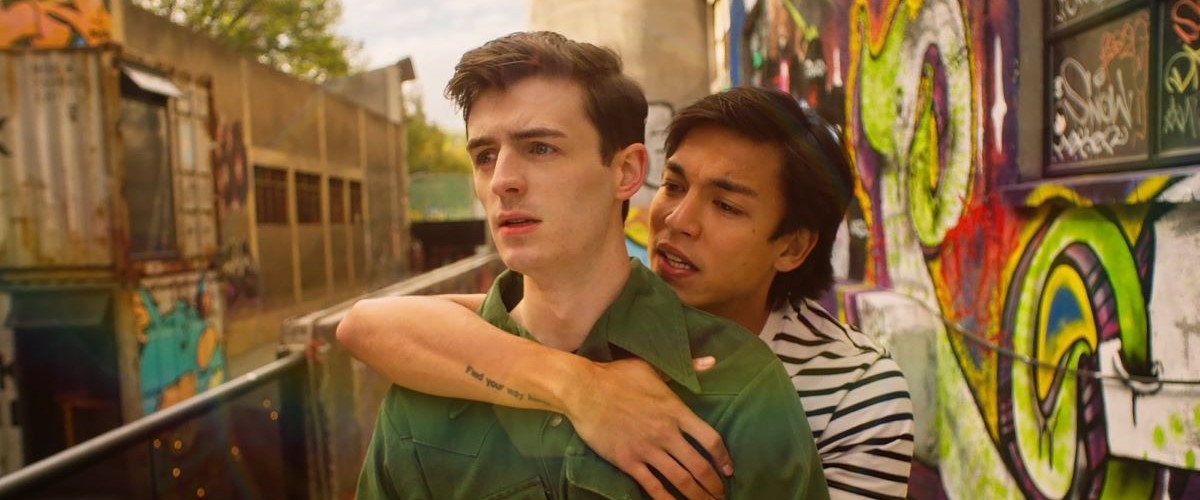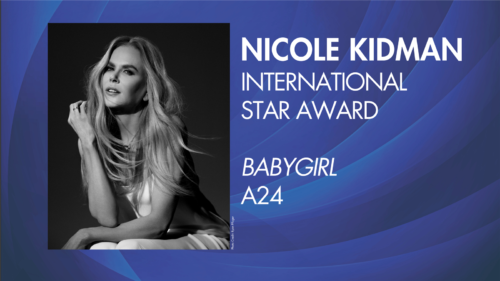The Indigo Girls are having a moment. The upcoming documentary "It's Only Life After All" profiles the beloved singer-songwriting duo Amy Ray and Emily Saliers in a way that feels long overdue. And then, of course, "Closer to Fine," a single off their second album, released in 1989, showed up multiple times in Greta Gerwig's "Barbie," blasting out of Barbie's car radio, with everyone singing along gleefully. Hearing "Closer to Fine" reverberating through the cotton-candy-pink corporate-driven fantasia of "Barbie" was legitimately funny. The lyrics are disturbing—darkness' insatiable hunger, fear "like a blanket," "seeking solace in a bottle"—but the tune is catchy. The Power of Two continues with "Glitter & Doom," a new jukebox musical directed by Tom Gustafson, with screenplay by Cory Krueckeberg, made up entirely of songs from the Indigo Girls' vast catalog.
The story is simple to the point of being simplistic. Glitter (Alex Diaz) dreams of attending clown college in Paris. If only his high-powered executive mother (Ming-Na Wen) were more supportive! Doom (Alan Cammish) is an aspiring singer-songwriter, scribbling lyrics in a notebook, and auditioning repeatedly at the local gay club, being told by the club owner (Lea DeLaria) to play something "lighter". Glitter and Doom meet one night and begin a tender yet neurotic romance. Glitter is hopeful and optimistic. Doom is the opposite. But they support each other in their artistic pursuits, even if clown college will keep them apart eventually. Doom has a backstory worthy of his name. There's conflict, but most of it is pretty mild.
The way to watch "Glitter & Doom" is to just ride the wave of the music, enjoying the new versions of the songs (Michelle Chamuel did the arrangements). The plot is constructed around the songs. This is true of all musicals, but there's an artful way to do it. In "Glitter & Doom," you can always feel the script marching towards the next song, as quickly as possible. The conception tends towards the unfortunately literal: if the lyrics refer to the setting sun, then there is a shot of the sun setting. There's a lot of that. Compare to Julie Taymor's much messier and yet, in a way, more gratifying "Across the Universe," where entire worlds erected themselves in between each note of the Beatles' songs, and the whole thing was clearly driven by a very specific artistic vision—however unwieldy the end result might have been. "Glitter & Doom" plays it safe, comparatively.
I lost count of the songs covered, but "Closer to Fine," "Bitterroot," "Galileo," "Love Will Come to You," and "Get Out the Map" have prominent positions. There's a mashup of "Touch Me Fall," "Shed Your Skin" and "Prince of Darkness" which is so inventive it took me a second to even recognize the songs. There are some dance numbers, but most of it is Glitter and Doom singing—to themselves, or to each other. The two young leads are charming and sincere. The cast is peppered with big names in small roles. Tig Notaro shows up as a very dry-witted professor of clowning, and Missi Pyle is heartbreaking and a little scary as Doom's troubled mother. Both Ray and Saliers make cameo appearances.
It's not some big mystery why "jukebox musicals" have been in vogue, especially on Broadway, for the last 30 years or so. These musicals tap into audience nostalgia and play to people's yearning for the familiar. Why take a risk on brand new material? Too much money is involved. Sometimes lightning is captured in a bottle. "Mamma Mia!" is probably the gold standard of jukebox musicals at this point in time. "Million Dollar Quartet" and "Jagged Little Pill" are in heavy rotation in regional theatre and summer stock. They're great shows. The challenge for jukebox musicals is to create a script that could conceivably exist without the music. "Glitter & Doom" can't quite manage it.
In the late '80s, earnest female folk singers were making a comeback. The Indigo Girls were part of that trend, but they surged past the trend. They've been playing and touring and recording nonstop for 35 years. Their shows still pack in multi-generational crowds. Unlike many of their contemporaries, they were not one-hit wonders. Ray and Saliers are both lesbians, and their status as queer icons is a hugely meaningful part of their success. They mean something to people. I've been listening to them ever since I bought their second album—on cassette tape—back in 1989. The thing about the Indigo Girls is the depth of feeling their music creates. Something about their chord changes and harmonies mainline emotion right into your veins, bypassing the intellect. To this day, I can't really listen to "Watershed" or "Love Will Come to You" because at the first chords I am propelled right back to a time when I was heartbroken over losing this man I was wildly in love with and listening to both of those songs a lot. I hear them now and I am back there again. The little coda to "Love Will Come to You" still gets to me:
And I wish her insight to battle love's blindness
Strength from the milk of human kindness
A safe place for all the pieces that scattered
Learn to pretend there's more than love that matters
Music can bypass your defenses. Music can imagine a better world, but it can also mourn the world or a love you've lost. Sometimes music does both at the same time. The Indigo Girls are like that.
"Glitter & Doom" understands this dynamic, but the architecture of the film is so rickety there's nothing to hold onto. Just sit back and ride the waves of the music.




















